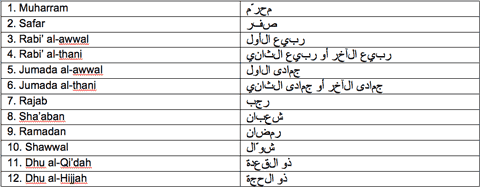- Trending:
- Forgiveness
- |
- Resurrection
- |
- Joy
- |
- Feminism
- |
- Afterlife

RELIGION LIBRARY
Sunni Islam
Influences
Before the polarization of Islam into Sunnism and Shi‘ism in the early tenth century, previous incarnations of sectarian division existed in the Muslim community. Several groups, defined in part by their different approaches to theology and politics, included Kharijites, Murjiites, Qadarites and Mutazilites, and Shi ‘is. The greatest and most substantial influence on the emergence of Sunni Islam was the development, over the first three centuries of Islam, of hadith literature. The hadith consist of short, narrative reports detailing what Muhammad said, did, and approved of during his life and prophetic career. These short narratives range in subject from mundane daily activities, including eating and sleeping habits, to far-reaching legal decisions. A hadith is composed of two essential parts that are pertinent to how this genre of literature developed: an isnad (chain of transmission) and a matn (body of the narrative). The isnad is a list of names, listing the people who heard and transmitted the content of the narrative.
Because Islamic culture was initially comprised of oral tradition, it was important for early generations to attribute the narratives that they related to one another and to subsequent generations to credible sources. A typical isnad-matn combination could read, for example, "so-and-so heard from so-and-so that he heard from so-and-so that the Prophet used to raise his hands to shoulder level at the beginning of a prayer."
Sunni Islam developed detailed principles regarding the legitimacy and applicability of hadith that were narrated in this way. A primary consideration was the reputation and reliability of the people (men and women, though the majority were men) named in the isnad. What distinguished Sunni hadith was the "cast of characters" deemed acceptable to later scholars who parsed and organized these reports once the genre passed from oral to written culture.
Sunnis elaborated a methodology that emphasized the authority of Muhammad's Companions, known collectively as the Sahaba. These men and women shared a closeness and familiarity with the Prophet that made them repositories of valuable information for how he lived. Second to the scripture of the Quran, the hadith served to elucidate aspects of practice and law so crucially that they are considered a second source for Sunni practitioners. Over the course of the first two centuries of Islam, scholars and theologians elaborated a complex and nuanced set of principles, the Science of Hadith, for analyzing the credibility of chains of transmitters and the veracity of the content of what had emerged as a vast body of texts. Hadith Sciences eventually led to the consolidation of this type of literature into six canonized collections, which are sometimes called "Al-Sihah al-Sittah" or "Kutub al-Sittah."
| Islamic Calendar |
 |
Their authors and dates, according to both the Islamic (hijri year, also noted as A.H., or Anno Hegirae,) and the Gregorian calendar, are as follows (the Islamic calendar begins in the 7th century):
- Muhammad b. Isma‘il al-Bukhari, who died in 256/869-70.
- Muslim b. Hajjaj al-Nishapuri, who died in 261/874-5.
- Abu Dawud Suleyman b. Ash‘ath al-Sijistani, who died in 275/888-9.
- Muhammad b. Isa al-Tirmidhi, who died in 279/892-3.
- Abu 'Abd al-Rahman al-Nasa'i, who died in 303/915-16.
- Ibn Majah al-Qazwini, who died in 273/886-7.
Al-Bukhari's and Muslim's collections are among the most popular, though Sunnis accept the validity of all six compilations.
Because so much of the development of Sunnism was connected to the Companions and their transmission of hadith material, the boundaries and shape of early Sunnism over the course of the first three centuries of Islam reflected an emerging vision of who the key players were in the formative period of Islamic life. Intertwined with the conflicts and controversies among the first generation of Muslims concerning the leadership of the community was the question of which Companions to prefer over others in the transmission of hadith.
Both Ali and those who opposed his leadership counted, after all, among the Companions. Ali could not be dismissed in spite of the divisions his caliphate inspired. For this reason, a distinct Sunni identity depended upon fashioning a view of history that bolstered the elections of Abu Bakr and Umar, and eventually of Uthman, while also accommodating the eventual ascension and acceptance of Ali. Following the establishment of the unprecedented dynastic succession policies of the Umayyad Empire at the hands of Ali's opponent Muawiya, himself a man of mixed reputation, this was no easy matter. One major solution to this protracted problem was the accommodation of Ali into a grouping of the first four caliphs who led the community after the death of Muhammad, called al-khulafaa al-rashidun, the "Rightly Guided Caliphs." This term became an enduring hallmark of Sunni Islam.Study Questions:
1. How did the hadith literature help Sunni Islam emerge?
2. What was the role of authority within the hadith? Why was it important?
3. Who were the important successors to Muhammad? How were their teachings passed down?










